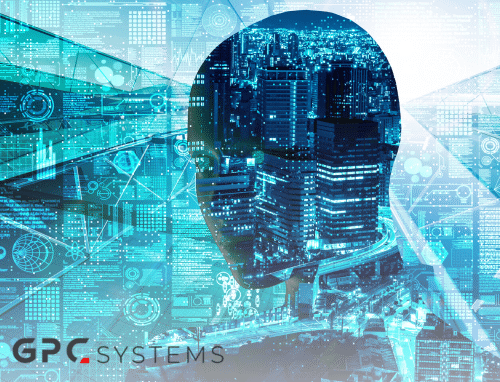
AI in Well-Being: A Blessing or a Burden for the Human Experience?
It was not so long ago that the concept of human well-being became a central focus in the societal and economic spheres. Traditionally, success was measured by wealth, power, and productivity. However, as the world evolved, so did our understanding of what it means to lead a fulfilling life. The shift towards prioritising human well-being began to take shape in the 20th century, as psychologists, economists, and social reformers started to argue that true prosperity should be measured not just by financial metrics but by the quality of life.
The Birth of the Well-Being Movement
The roots of the well-being movement can be traced back to the mid-20th century, when thinkers like Abraham Maslow began to challenge conventional ideas about success. Maslow, an American psychologist, introduced his famous hierarchy of needs in 1943, suggesting that human motivation is driven by the desire to fulfil a series of hierarchical needs—from the most basic physiological necessities to the pursuit of self-actualisation. This was a radical departure from the earlier, more materialistic views of human motivation, and it laid the groundwork for a broader understanding of well-being that included emotional and psychological health.
Around the same time, the economist Richard Easterlin published his influential work on the “Easterlin Paradox,” which revealed that beyond a certain point, increases in income do not correlate with increased happiness. This finding spurred further research into what truly contributes to human well-being, leading to the birth of the field of positive psychology. Figures like Martin Seligman and Mihaly Csikszentmihalyi became pioneers in this area, advocating for the study of what makes life worth living, rather than merely treating mental illness.
The Corporate Shift Towards Well-Being
As these ideas gained traction, they began to influence not only individuals but also organisations. Companies like Google and Johnson & Johnson became early adopters of workplace well-being programmes in the 2000s, recognising that employee satisfaction and mental health were crucial for productivity and long-term success. Google, for instance, introduced initiatives like flexible working hours, on-site wellness centres, and mental health support services. The tech giant’s approach was guided by the belief that a happy workforce is a more creative and efficient one.
These efforts marked a significant shift in corporate culture, as businesses started to see the value in nurturing their employees’ well-being. The idea was simple but profound: if companies invested in their people’s well-being, they would reap the rewards in the form of higher productivity, lower turnover rates, and a more positive workplace environment.
The Role of AI in Modern Well-Being
Fast forward to the present day, and the landscape of human well-being is being transformed once again—this time by artificial intelligence (AI). AI has the potential to revolutionise how we approach well-being on both an individual and societal level. By analysing vast amounts of data, AI can provide personalised recommendations for improving mental and physical health, predict potential health issues before they arise, and even offer support in managing chronic conditions.
For example, companies like Apple and Fitbit have integrated AI into their health-focused wearables, offering users personalised insights into their fitness levels, sleep patterns, and stress indicators. These devices can suggest when you might need to take a break, get more sleep, or increase your physical activity, all based on real-time data. Moreover, AI-powered mental health apps like Woebot and Wysa offer users immediate support and coping strategies, making mental health care more accessible than ever before.
But it’s not just about gadgets and apps. AI is also being used in more profound ways, such as in the field of genomics. Companies like 23andMe are using AI to analyse genetic data, helping individuals understand their genetic predispositions to certain conditions and offering tailored lifestyle recommendations to mitigate these risks. This is a far cry from the one-size-fits-all approach of the past, representing a more personalised and proactive form of health care.
The Pioneers of AI-Driven Well-Being
Leading the charge in integrating AI with human well-being are visionaries like DeepMind’s Demis Hassabis, who has been at the forefront of using AI to tackle some of the most complex challenges in health care. DeepMind’s AI has already made significant strides in predicting the structure of proteins—a breakthrough that could revolutionise drug discovery and disease treatment. The potential for AI to extend and enhance human life is immense, and pioneers like Hassabis are driving this transformation.
Another notable figure is Fei-Fei Li, co-director of the Stanford Human-Centered AI Institute. She advocates for AI that augments human abilities while ensuring that ethical considerations remain central. Her work emphasises the importance of developing AI technologies that not only benefit human well-being but also respect human values and rights.
The Double-Edged Sword of AI
However, as with any technological advancement, the integration of AI into human well-being is not without its challenges. One of the most significant concerns is privacy. The same data that allows AI to personalise health recommendations could be misused if it falls into the wrong hands. There is also the risk of over-reliance on technology, where individuals might become too dependent on AI-driven solutions and lose touch with their own intuition and self-awareness.
Moreover, there are ethical questions surrounding the use of AI in decision-making processes, especially in health care. For instance, if an AI system recommends a particular treatment, who is accountable if the outcome is unfavourable? The opacity of AI algorithms—often referred to as the “black box” problem—means that it can be difficult to understand how these systems arrive at their decisions, which can be problematic in sensitive areas like health care.
Public Perception and the Future of AI in Well-Being
Public opinion on AI’s role in well-being is divided. While many people appreciate the convenience and potential health benefits that AI offers, there is also a significant amount of scepticism and fear. Concerns about job displacement, loss of privacy, and the potential for AI to be used in harmful ways are prevalent. As a result, there is a growing demand for transparency and regulation to ensure that AI is used responsibly and ethically.
Despite these concerns, the integration of AI into human well-being seems inevitable. The key to successful integration will lie in striking a balance between embracing the benefits of AI and addressing its potential downsides. This will require collaboration between technologists, ethicists, policymakers, and the public to ensure that AI enhances human well-being without compromising our values or autonomy.
In conclusion, AI has the potential to be a powerful tool in the pursuit of human well-being, offering personalised health solutions, improving mental health care, and even extending human life. However, it is crucial to approach this integration with caution, ensuring that the technology is used ethically and responsibly. As we move forward, the challenge will be to harness the power of AI while safeguarding the very qualities that define our humanity.
Join us here at GPC weekly as we explore Ai and current trends.




